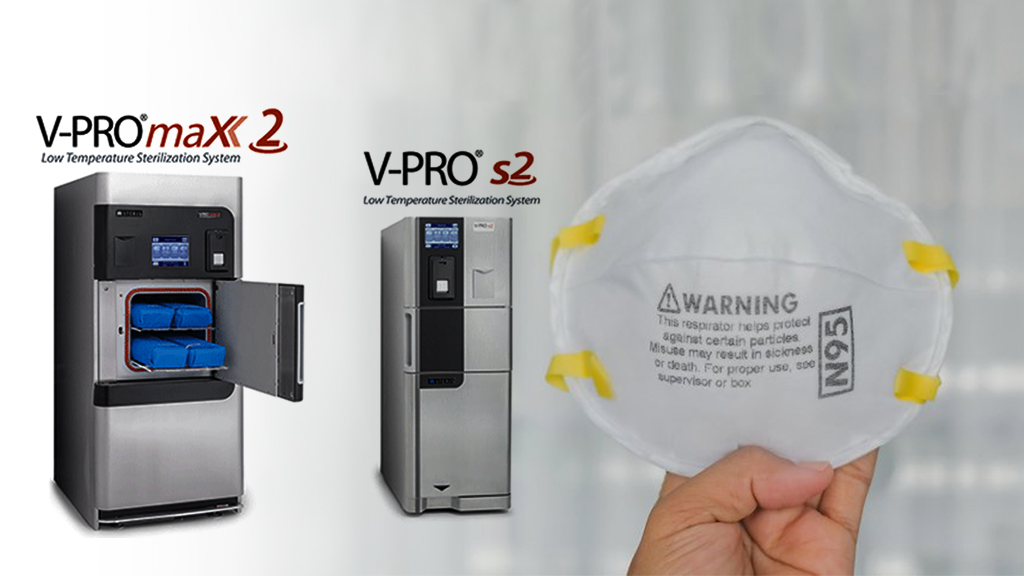The V-Pro S2 and MAX 2 devices allow ten reprocessing cycles of up to 10 masks per cycle, extending their useful life.
N95 face masks are an essential piece of personal protective equipment. Healthcare workers use a large number of masks for protection, so decontamination and reutilization ensure continuous availability even at times of peak demand.
The V-Pro S2 and V-Pro MaX2 systems can preserve essential elements of the masks, such as filtration performance and user safety. They are two low-temperature sterilization systems that operate at low pressure and leave no toxic residues.
Logistical support for the successful reprocessing of N95 face masks is critical. It is of utmost importance to ensure disinfection efficacy and end-user safety, so planning and coordination are required to carry out this action.
The COVID-19 pandemic had a double impact. On the one hand on public health, generating an unforeseen demand due to the disease and, on the other hand, on the global economy for multiple factors. In this sense, the management of some basic elements in the Infection Prevention and Control (IPC) programs and the daily care of patients generated a higher demand for N95 respirators due to their 95% efficiency in filtering particles, which limited its supply.
To find a solution to the shortage of the product, the Beth Israel Deaconess Medical Center (BIDMC) team conducted research based on reprocessing masks employing vaporized hydrogen peroxide. The respirators analyzed met the primary function and effectiveness endpoints and passed 12 quantitative and qualitative tests, in addition to maintaining filtration efficiencies of 95% or above throughout the study.
Keys to reprocessing N95 respirators
The demand for personal protective equipment (PPE) for healthcare workers increased dramatically due to the high spread of the COVID-19 virus and its constant mutations. V-Pro S2 and MAX2 process these products by vaporizing hydrogen peroxide under vacuum conditions.
Healthcare institutions are familiar with the stock and supply chain of face masks. Many implemented control measures to address the shortage of this resource. For instance, reducing the number of patients admitted, allowing non-essential patient care personnel to enter the areas of greatest risk, or even reducing face-to-face meetings between care personnel and patients (promoting telemedicine) or not allowing visits to patients confirmed with Covid-19 and to suspected cases. Another alternative was to prioritize masks for selected activities, also to restrict their use. However, sterilizing face masks is possible.
What is required to sterilize respirators?
It is worth highlighting two key points for sterilizing respirators: filtering capacity and cleanliness.
On the other hand, the filtration capacity must be preserved. This means that it is necessary to visually inspect the integrity of the respirator and verify that components such as straps, nasal bridge and nasal foam material have not degraded, since any alteration could affect the quality of the mask.
On the other hand, before sterilizing the masks, it is imperative to check that they are clean. That is to say that they must not have traces of body fluids, blood, respiratory or nasal secretions or make-up, since any of these points would affect their proper disinfection and would reduce their effectiveness in subsequent uses.
At Fibonacci Corp. we seek alternatives that allow healthcare institutions to continue performing their work safely, optimizing time and resources. We know that the features of the V-Pro S2 and V-Pro MAX2 equipment ensure that the properties of these personal protection elements are preserved during and after sterilization.
Note that several studies have shown that proper positioning and hand hygiene before and after removing the mask, as well as proper storage, can prevent contamination and preserve its integrity.
If you have any questions, please contact us.

